Why Modern Movies Suck:
The Ideology of Diversity, Inclusivity, and Equality

So I decided to watch the third and final installment of the Jurassic World movie series: Jurassic World Dominion (2022). The movie starring Christ Prat brings to an end (at least for now) the reboot of the acclaimed Dinosaur film series that began all the way back in 1993.
That film was a phenomenon. This isn’t. Unsurprisingly so. For this is not the first time the revival of a acclaimed IP with bigger budgets, new actors, and better CGI has failed with respect to the end product (Though not necessarily in terms of box office-though wonder how long that will last). Too many damn movies these days, and I am talking about big-budget movies that come from large studios, with an A-list cast, that routinely churns out subpar or utterly mediocre end products.
A trend that is getting awfully predictable, given the sheer number of movies that promise great things (being recognized IPs), but turn out to be more than a let down when they hit the big screen. A reality that only seems to dawn on audiences after the films have raked in billions. The Star Wars sequel trilogy being a case in point.
It has now got to a point now where I have to basically hunt for a decent enough movie that is worth watching on the big screen or anywhere else, since the time investment is just not worth it. There is a definite drop in the quality of movies when it comes to core tenants like: plot, character development, world building, setup and payoff, and other factors that have historically defined a good motion picture.
There appears to be something fundamentally wrong with modern Hollywood. Or maybe, it is no longer a question of good or bad, right or wrong, but rather it is one of priorities. In the past decade or so something has happened to the way movies are being made, and how stories are being told via this art form. Something that has warped the enterprise from within. One that has made modern movies a chore at best, and often an an ordeal to sit through for film goers who just want to see good movies
So what is driving this shift? If modern Western movies are indeed moving away from historical markers of quality and cinematic excellence, then what explains this newfound emphasis on new, different standards? Standards that place great emphasis on unmaking what came before, on advancing not just an updated or reimagined perspective of things that (used to) matter, but appear at a deeper level, downright antagonistic to the stories of the past.
The answer of course is ideology. But what kind?
Diversity Inclusivity and Equality: The Unholy Trinity
The Oxford dictionary definition of the word ideology is that of system of ideas and ideals, especially one which forms the basis of economic or political theory and policy. The second definition of the term is equally pertinent: The set of beliefs characteristic of a social group or individual(1). Taken together the concept of ideology refers to a system of beliefs or ideas which are held by a group of people, who, depending on the strength of their beliefs, seek to advance it often for a political end.
And when we speak of politics, notably one that is driven by an ideology that is irrationally idealistic (i.e. like communism), the endgame invariably is to alter certain aspects or, depending on how Utopian its aspirations, the very character of society. No matter the consequences.
Since we are talking about Hollywood, and the film industry in particular, it is somewhat difficult to determine the true character of the ideologically motivated politicking that is going on behind the scenes. However based on the end product: that of bland, subpar, awfully predictable, depressingly subversive cringe reels that are being served up to credulous masses time and again with such audacity, it does warrant some scrutiny.
Whilst much of the analysis by those who venture out to analyze and critic the problem with modern movies-which in practice takes the form of deciphering the problems that are believed to be bedeviling modern movies-has converged on the subject of ‘wokeness’. Which is the ideology of fighting injustices, real or perceived, current or historical, and other forms of discrimination in society, notably sexism and racism.
The opposition to this ‘woke’ crowd is now embraced by a segment of socially active netizens, who can be vaguely defined as the representatives of nerd culture or geek culture. Who yearn for more traditional ways of story telling. A group, at least a segment of it, I would further characterize as ‘cultural counter reactionaries’. Who in recent years have organized themselves online to combat, what they (rightly) believe is the creeping politicization of storytelling, which often takes the form of denigrating the core elements of their beloved IPs. Such as Star Wars, Dr. Who, and now Lord of the Rings, and many others.
These guys, and to a lesser extent, girls are by no means a small minority. With a sizable following online, the ‘leaders’ of these anti-woke protest movements, which I engaged in an earlier post on the subject, employ the catch-all critical term for movies that adopt or embrace such politicization: ‘get woke go broke’. Implying that films and production companies that pander to such ideological messaging invariably stand to lose out at the box office and/subscriptions (Well maybe not now but eventually). As they risk alienating their traditional customer base.
Whilst this critical position is commendable, especially from an entertainment standpoint (Where TV show and movie reviews tend to be better than the actual show) an analysis of the true problems that bedevil modern movies must go deeper.
If there are three words that capture the character of modern cultural discourse in the West (political or otherwise) in the past decade or so, they have been: diversity, inclusivity, and equality. Each of these terms comes loaded with an underlying commitment towards a certain worldview. One that is characterized by a sense of justice: that is to fight social injustice. One that is, in practice problematic in terms of the conflicts it creates with respect to traditional or better authentic story telling.
What’s funny is that the concepts of diversity, inclusivity, and equality have already seen the light in the world of movies and TV. Contrary to what may seem, these are not alien concepts that have suddenly entered the entertainment space in course of a decade or so. But what is different today is how these concepts have been altered and reinterpreted to suit a very specific agenda. One that is in practice, in terms of their aims, goes against the very ideas they purport to advance. To understand how this works out in practice let’s look at how these concepts have already been engaged in better movies in the recent past.
Movies that Got it Right
First off, what exactly do these three terms diversity, inclusivity and equality mean in application? Given the orientation of these concepts towards ostensibly noble goals of making the visual art form more ‘diverse’, ‘inclusive’ and ‘equal’, there is a tendency to simply pass off on attempts to truly grasp the nature of the subject.
To understand these three key concepts which have now become the governing theology of modern (Hollywood) film making, given the religiosity with which it is advanced, I will engage each of these concepts by analyzing them in relation to three top movies which got it right, but without the agenda. And whilst there may have been an underlying agenda, as we shall see, the film worked to remain faithful to the core elements of good story telling.
This compare and contrast approach will lay the ground work for the deconstruction of the concepts of diversity, inclusivity and equality with respect to their problematic character in the next section.
Diversity (The Matrix 2000)
Diversity is a term we have come to hear so often in present times. One that in its essence implies the need for more representation of persons and viewpoints that go beyond the traditional Western, Christian and European character.
In present times the calls for greater diversity is partly a reflection of the growing shift in the wider cultural discourse to cater to the sensibilities of minority groups, who have come to makeup a larger and larger portion of the American market. This a reflection of demographic changes at home-vis a vie the relative decline of the ethnic Europeans or European Americans in the United States. This is understandable. However what is problematic, and one that I sense has become self-sustaning in recent times, is this overarching need, one that is almost compulsive in its character (ideological) to promote the views, character, beliefs and persons who fall outside the traditional Western, Christian, European and specifically Anglo-American purview.
As it happens there is a movie that nails the idea of diversity, one that is set in a Western setting, but is also a cinematic and story telling success.
The Matrix: Diversity of Ideas and Perspectives
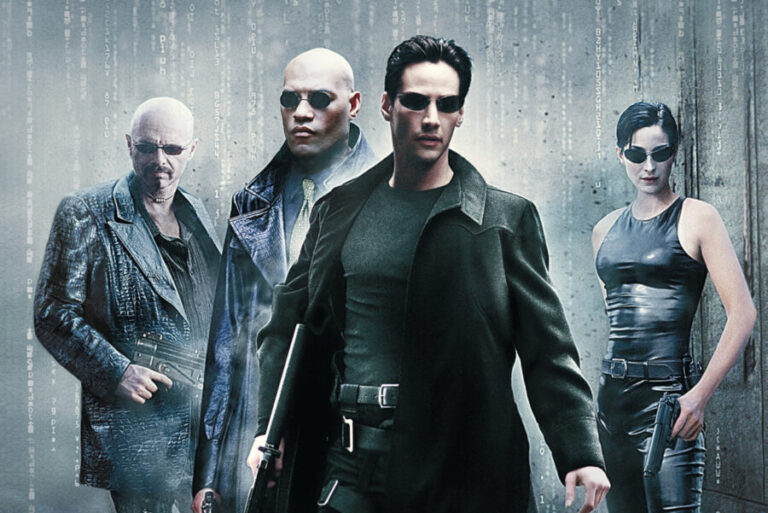
One of my favorite movies of all time The Matrix (1999) is a film that is treasured by many (particularly young men).
The film had pretty much everything that caters to a host of male-centric interests: Fan of Science Fiction? Check. Fan of Action-Thrillers? Check. Fan of Future Dystopia? Check. Fan of Philosophy that questions the meaning and purpose of life? Check. Fan of the Hero’s Journey? Check. Fan of Mysticism and Religious Symbolism? Check. Fan of Kung Fu? Check. Fan of old- school (Heterosexual) Romance? Check. Fan of … You get the picture.
It goes without saying that The Matrix is one of the greatest movies ever made. Leaving aside its cinematic and storytelling greatness, in context of our present debate on diversity, inclusivity and equality, this movie absolutely nails the diversity question. And it does so by NOT making a big deal out of it. And interestingly it manages this, despite adhering to some stereotypical visual story telling devices that have now become pervasive in the film industry.
For starters The Matrix features a diverse cast. Neo Anderson played by Keanu Reeves, who like most Americans has a diverse ethnic heritage, despite being predominantly European. Carrie-Anne Moss is also mixed European; Laurence Fishburne is African American; Agent Smith is European (English); The Oracle is African American, Tank (for some reason my favorite character in the movie) is half-Chinese half-African American; and his big brother Dozer is African American. Capped off with a predominantly European (ethnic) side cast.
Right. So what is good about this movie on the diversity scales? First off the movie features a strong cast of characters who are played by personnel who fit the profile. Casting Laurence Fishburne in a critical role was justified as he played that perfectly. So did other key characters. Morpheus is Laurence Fishburne, just like the Carrie Anne Moss is Trinity. Needless to say, the same goes for Neo and the Oracle.
Whilst the movie falls in the predictable trap of portraying all the villains with actors who are of ethnic European heritage. (All the agents of the System are White, including the rebel program and the main Antagonist of the series Smith). And the human resistance to the Machine oppression is also somewhat predictably (in a modern sense) portrayed as predominately non-Caucasian if not African American heavy movement. A theme which continues in the godawful 2021 entry of the same IP.
Nonetheless none of the character decisions seem forced or agenda driven. All the characters, good or bad, come with flaws, strengths, which contribute to the advance of the story. There is little connection with real-life scenarios or problems that may or may not affect the relevant social group (besides that of the oppressor vs oppressed narrative) set in the future dystopia. Men and women, young and old, smart or impulsive, caring or confrontational, faithful or conniving, all play their part accordingly.
The significance of their ethnicity and gender and (possible) orientations are kept off screen. As these have little to do with the advance of the plot. Unless it is of absolute necessity. Trinity falling in love with Neo was a plot point upon which, not only the movie but the entire character of the protagonist hinged. And her gender (sex) served its function, just as Neo’s did.
Of course if one wishes to read in his/her own interpretation of these events in light of current, historical or future political dramas, they may do so freely. But that is the beauty of this film. It does not set out to explicitly state its intentions. Whatever social message it may or may not have, whatever deeper social and political ideology or worldview its creators had in mind, that ‘something’ was left to the viewer and the armies of Matrix enthusiasts (such as yours truly) to study and figure out.
And that’s what happened. The sheer volume of fan theories, speculation, philosophizing that has emerged in relation to the fecund world of the Matrix is a testament to the greatness of the film and the trilogy it gave rise to. (And yes, I am a fan of the second and third installments). Diversity in terms of the casting, whilst a strength, whilst not a defining feature of the movie.
The Diversity of Ideas Not Just People
A concept of ‘diversity’ that the first Matrix movie handles expertly comes down to the varied philosophies that it integrates into film. Whilst enough has been said of Neo has a Christ-like figure (or a literal Christ) of a far-future humanity. An idea captured most pronounce at the end, where upon his (supposed) death a fiery Crucifix of light expands through his outstretched body, destroying the Smith virus, who symbolizes evil and death, and also killing him in the process. Akin to Jesus Christ, who upon dying on the Cross destroys the power of death. An informative take on the visual and story telling sophistication of the movie can be found in a review by Film Theorists(2).
However one of the standout features of this film is how it integrates a diverse array of beliefs and philosophies into the narrative and artfully so. From reincarnation, which is a main feature in Hinduism (Neo is the sixth version); the Gnostic emphasis on knowledge as opposed to faith alone (knowing the truth and to ‘Know Thyself’ as the pathway towards liberation from evil and suffering); along with literary references to works such as Simulacra and Simulation (1981). This is true diversity. One that distinguishes itself by embracing different ideas, beliefs and worldviews. Rather having a bunch of people on set who just look different!
The Matrix stands apart as a cinematic, and cultural achievement. One that succeeds as a film that artfully represents the creative and genetic diversity of humanity on screen, by not forgetting the centrality of the story, character and artistic excellence (bullet time anyone).
Inclusivity (Blade II 2002)
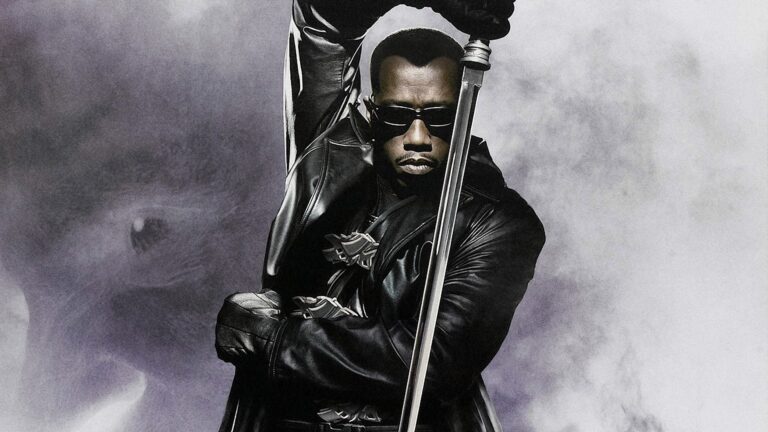
Having engaged the topic diversity, the question is how does one engage a term that essentially carries a similar meaning. A quick search for the definition of diversity and inclusivity reveals they are essentially the same, but differ in terms of the intent.
My take on ‘inclusivity’ goes something like this: the concept of diversity emphasizes the need to include views and people from diverse (i.e. non-Western backgrounds), inclusivity appears to make a bolder point on the need to render them equitable value. Which is to say that a person who is different in terms of nationality, ethnicity, religion or ability is to be viewed or valued the same way as someone who does not fit into that mold: such as an able bodied heterosexual European male.
The term inclusivity, to my mind, differs from diversity in that it contains an intention to include, as opposed to simply value and uphold differences. It is about reinforcing the worldviews of the minority, often in a way that is over and above that of the traditional majority. Which sounds a like recipe for disaster from a cinematic standpoint (and it often is), but Blade II handles this expertly well.
Inclusivity Does Not Mean Predictability
Blade II is my favorite superhero movie.
It is, in my humble view, a masterpiece that combines Gothic horror, Sci-Fi action, and good old family drama (a really messed up kind) into a coherent story set in a believable world. The cinematic achievements of Guillermo del Toro in this early 2000s flick is probably best reserved for a dedicated post of its own. What I would like to focus here is on the inclusive character of the cast and how that does not interfere with the core elements of the story.
Blade II stars Wesley Snipes, who is a top casting choice (which makes it kinda sad that he isn’t part of upcoming Blade reboot). Besides being trained in the arts of combat, Snipes fits the role of a vampire hunting action hero perfectly. With a quite aura that manifests grit, focus and strength. And he is African American.
Looking around there are other actors from various ethnic backgrounds. In fact it almost seems the producers went out of their way to cast an ethnically and nationally diverse group of actors: Blade – (African American); Nyssa (Chilean); Nomak- the bad guy (English); Snowman (Hong Kong); Eli Damaskinos- other bad guy (German); Asad (British-African). In addition to being ethnically diverse, what is ‘inclusive’ about Blade II, in a good way that is, is that none of the characters play stereotypical roles.
For starters we have a protagonist who is African American, but he is not your stereotypical ‘Black guy’. Meaning he is not some low-life gangster, or some hoodie type who walks, talks and acts as if his only source of inspiration in the world is MTV (from the late 90s to early 2000s). In addition to being serious, reserved and focused, Blade is not someone who is held back by his past or his weaknesses. He is a man who has risen above his history, his losses to become an ace vampire hunter.
Of course playing a vampire hunting superhero who has all the strengths of the blood suckers baring the thirst does streamline his role bit. Nonetheless it was great (for the time) to see an African American actor who didn’t play the stereotype. A modern example that comes to mind is Mahershala Ali in the House of Cards. Another solid actor (Who by the way is the new Blade).
This principle of characters playing out their roles assigned to them, continues with the rest of the cast. Nyssa, who plays a brave and beautiful female supporting character is well-balanced. Showcasing a wide range of abilities and emotions, including a soft spot for the titular protagonist. Not the sort of thing one is likely to witness today.
Whilst the main villains are all (again) ethnic Europeans, which is a bad trend in present times, the bad guys themselves are not without nuance. Their motivations, such as the awesome villain Nomak and his father Damaskinos, whilst nefarious, in terms of their goals go beyond just wishing to do harm and cause suffering: The vampire Overlord Damaskinos intended to cure the vampire race of their weakness to sunlight and silver, but things, as they usually do, took a wrong turn. Nomak’s story line is even more complex. It is the tale of a tragic villain, who is seeking reverence but also… Redemption!? One that enhances the narrative of the bloodthirsty beast.
What makes Blade II a truly inclusive film is that it in addition to featuring a cast from a wide range of ethnic and cultural groups, the inclusive character only works to enhance the quality of the final product. A movie where its inclusive character is not its end or primary goal. Which is not something that could be said about inclusivity-obsessed films of today. Where the idea or ideology inclusivity: that of representing minority groups and their 101 grevances often buries other key elements of story telling.
Blade II is a film which features actors who play their roles well, whilst not falling into predictable (ethnic) stereotypes. Notably the film is inclusive in the sense that it incorporates diverse elements of visual story telling: familial conflict, betrayal, revenge, evolution of life (or Design) and the fight for survival into a single action thriller that is filled with blood, gore and dread. A story where the gender, ethnicity and whatever particularity of the actors fades into the tapestry of this masterwork of brooding horror and action.
Equality (The Lord of the Rings 2001)

When one speaks of equality in modern times, particularly in a pop cultural sense, the concept tends to be associated with gender. In the economic and political sphere, ‘equality’ has been increasingly associated with race and sexual orientation. Today the topic equality with respect to representation have become a prominent feature of movies and television. Often for the wrong reasons.
In this section I will limit my focus of the subject of equality to that of gender. Which despite all the changes that have been taking place (i.e. the growing strength of the LGBTQ movement in Western nations), the idea of ‘correcting’ the historical inequality or ‘discrimination’ as it is often understood, with respect to the portrayal of women, in terms of numbers and characterization, has remained the primary focus. As it will be in this part of the essay.
Today the idea of advancing equality in Western movies and television has taken on a life of its own. With a spate of movies and more recently TV shows (streamed content) that feature a female actress or actresses in a lead role. Which is not necessarily problematic. However what is concerning is how many of these female-led roles are essentially taking up story lines that were historically played by men: with the traditional male character being simply replaced with a studio creation. In the process undermining the final quality of the movie.
To understand this problem let’s look at a movie that nails the idea of equal representation of the sexes, whilst staying true to their (sex) differences. The true principle of gender equality.
The Fellowship of the Ring: A Fellowship of Complementarity
One of the beautiful aspects of the first and best in Peter Jackson’s trilogy of films based on Tolkien’s great work is how every character performed their roles near perfectly. With the casting again being spot on. As the character arcs and personalities of each major character complements the other in meaningful ways. Whether it is Gandalf and Saruman, Merry and Pippin, Frodo and Sam, Aragon and Arwen.
With respect to the portrayal of sexes, in the spirit of equality the Lord of the Rings gets it right and fair. Admittedly for a story written by an author from a different (more conservative) era, a more traditional view of the sexes tends to dominate. However Peter Jackson’s presentation of the female characters as beautiful and competent, feminine but powerful, lovely but destructive, wonderfully complements the bravery, heroism and timed aggression of the male characters.
When Aragon is tasked with protecting Frodo, he fails at a critical moment, when the Hobbits are attacked on Weathertop. Poisoned by the wraith’s sword, Frodo is dying with Aragon struggling to find a remedy whilst safeguarding the remaining Hobbits. At which point he is caught off guard by a sword in the dark, which is revealed to be that of his love Arwen.
Arwen’s character is interesting in a number of ways. Whilst she is undoubtedly ‘the girl’ of the story: being the romantic interest of the heroic warrior, and later the wife of the king. In addition her vulnerability, resulting from the choice to remain in Middle Earth to live with a mortal man, compounded by her fate being tied to that of the One ring via Frodo. All adds to that sense of feminine weakness that men, particularly noble, chivalrous, masculine men (or those aspiring to be one) find appealing. NOT in a some superior, egotistical way, but as that of a protector, guardian and leader. Or in other words as a real man.
Arwen is a strong woman. Her resourcefulness in aiding Frodo, whilst navigating her way around a band of murderous wraiths presents her as a hero in her own right. But her humanity, in terms of the choices she has to make, grounds her as a human being. A woman with heart and undeniable femininity. Elements that men find relatable and attractive. And by extension a sizble segment of movie goers.
The other major female character in the story is Galadariel. The Lady of Lórien and one of the bearers of a ring of power among the Elves. And an amazingly beautiful and powerful woman. Of course she is an elf but for let’s face it, she is female in every sense of the word.
However her power and presence is of a different kind. Unlike the ‘strong female characters’ of today, Galadariel isn’t out to prove herself. Particularly in her relations with men. She does not deem its necessary to compete with men aroun her for the limelight or power. For Galadariel, simply being herself is enough. Her knowledge, wisdom, and of course beauty are themselves markers of power.
In her encounter with Frodo, where the protagonist basically offers her the One ring, we are provided a glimpse into the terrifying and yet captivating aspect of her being. Her power when fully manifest will be great but different to that of the Dark Lord, or any other major character who has an eye on the One ring: Gandalf, Saruman, or Denethor. That moment when Galadariel narrates a future where she comes into possession of the One Ring is beautiful and terrifying.
“In place of a Dark Lord, you would have a queen! Not dark, but beautiful and terrible as the dawn! Treacherous as the sea! Stronger than the foundations of the earth! All shall love me, and despair”.
Galadariel’s significance to the story is elevated further following the demise of Gandalf at the Bridge of Khazad-dûm. After which she becomes (at least to me) the spiritual head of the Fellowhip. A figure of authority and solace. Her very presence calming and empowering. Imbuing the Fellowship with new hope that is so badly needed following the fall of its leader. In many respects, Galadariel throughout the rest of the trilogy remains the glowing guide, watching over the actions of the men on the field. She is, especially for someone of a Christian sensibility, a guardian, a mother, an embodiment of love and care and protection. If one is to speak of Tolkien’s Catholicism she almost reminds me Mary the mother of…
Whilst the fellowship to destroy the One ring solely consisting of men is a product of the times. It is one that fits perfectly into the wider world that Tolkien built in terms of characters and motivations. One that Peterson Jackson artfully bought to life in the cinematic triumph. Which is why to this date The Fellowship of the Ring remains arguably the greatest fantasy epic, and one of the greatest movies of all time.
The Real Problem: Uniformity, Exclusivity and Anti-masculinity
The trouble with modern movies today is that the ideas of diversity, inclusivity and equality have come to take on a life of their own. The singular aim to advance these narratives via the cinematic enterprise has given risen to movies, and underlying them plot lines that cater primarily to these sensibilities, with attention to story, character development and world building coming in at a distant second.
The agenda (which is what it is) to promote these ideologies (which is what they are) via the cinematic enterprise, and increasingly now in the streaming world of television (where movies are also working their way into), is now morphing to something that goes beyond the namesake intention of this noble program. The agenda to make movies more “diverse”, “inclusive” and “equal” have morphed into cultural vehicles to meet certain ends.
Vehicles for advancing an agenda to make movies not just different from those that adhere to the norms of conventional story telling, but to become symbols of a worldview that sets out to accomplish something subversive. Subversive in a way that is not just different, but undermining and antagonistic to what came before.
To breakdown the concept of diversity, inclusive and equality I will analyze their real analogues. Those which lies beneath these supposedly noble goals: Uniformity, Exclusivity and Anti-masculinity.
Uniformity: Matrix Resurrections (2021)
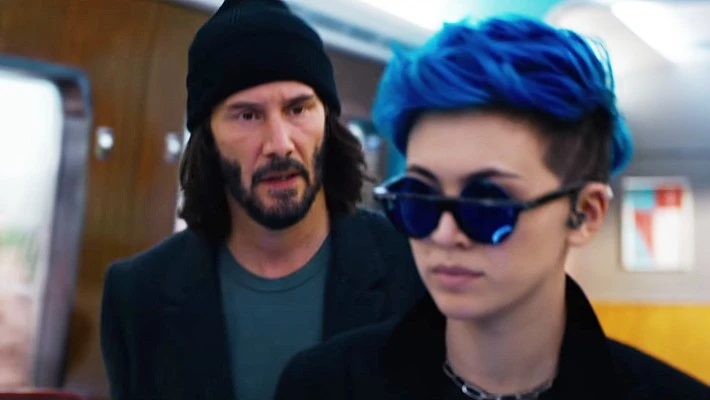
As a side by comparison to the original Matrix film, the 2021 Matrix Resurrections is a foil. The film not so much as retcons what came before it in the original trilogy, but rather it takes the film in a direction that is different to a point of being farcical. One that is contrarian in intent but also cynical towards the original.
This film not just paints a different picture of what the Matrix is or has become. But it literally set out to sh** on the original movies. And succeeds. The scene with Neo on the throne, meant to represent the aimless character of his new life, until he is whisked away on a journey of self-liberation by the purple-haired, crew-cut lesbian programmer wannabe, sums up the whole farce. The main aim of this movie was to undo Neo position as the One. And it succeeds.
The film, no doubt with the spirit of the times wished to elevate the female characters to equal heights to that of male protagonist. If that was the only aim, things would have been different but at least serviceable from a story telling standpoint. However what we see on screen is the wholesale rewriting of the movie’s original story line to a point where it undoes all that came before it. And in its place puts forward a view of the Matrix that is… interestingly uniform with respect to its final agenda.
Uniform, in that it subscribes to a number of social fads that characterize that have come to characterize (modern) cinematic storytelling (and presmubly a reflection of the real world). Such as the concept of the clueless protagonist (if the person happens to be male). One that warrants an insert character (usually female). One who is invariably more curious, able and with greater agency than the original protagonist. Who in time comes to drive the plot. An awfully predictable story telling trope, especially in streaming television. (Shows such as Picard, The Lost Symbol and Designated Survivor- that despite featuring a male lead character, the plot ends up being driven by strong female characters who dominate the limelight, with the main character often reduced to some useless figurehead).
The Matrix Resurrections is no different in this regard. With the purple-haired I will never be outdone (or inseminated) by a man Bugs, being the driving force of much of the story. Effectively she is the new Mary Sue character of the rebooted Matrix franchise for “girls to look up to”.
Then we have Morpheus. Or should I say Morpheus the gay wannabe. Which is not a criticism by the way. The original Morpheus despite being the captain of the Nebuchadnezzar was curiously uninterested in females. But this guy… I mean besides acting like some stand-up comedy reject for much of the film, is attired outrageously, moves around weirdly and has a story arc that does not make any sense. Much like the rest of the characters.
The key change in this film however is that Morpheus-who survives the original trilogy-is no longer the visionary head of (what should be) the former resistance. Alas, in this movie the resistance against the machines is ongoing! Didn’t the war between man and machine come to end with the Matrix Revolutions!? Guess we have another First Order on our hands boys. The task of leading this new resistance is now taken by an older Niobe. Morpheus’s girlfriend. But since Morpheus is dead replaced by a clown who does whatever, it has made way for the new matriarchal leadership.
As far retconning goes, the Matrix Resurrections pretty much hits every politically correct checklist. The once powerful, visionary, scheming, purposeful male characters are now replaced by ludicrous versions. From the long-existing The Merovingian, which survived all the former Neo avatars, that lived in sensual opulance, is now reduced to a literal madman who scavenges the underbelly of some rundown building with his fellow ragamuffins to eek out an existence. Morpheus as mentioned is now worse than a nobody, agent Smith is… What exactly is he!?
Then we have the Analyst. Mr. Anderson’s personal therapist (Heck watching the movie felt like undergoing a forced therapy session), who is supposed to be the new Architect. You got that right: Neo Anderson’s psychiatrist is also the person who created the Matrix. Or at least an updated version of him. You got to say how the person that Neo hated in the Matrix Reloaded, one that he hoped he never met, now coincidentally or conveniently, it doesn’t really matter, ends up as his personal shrink!
Then we have Trinity. Who is now presented as a co-equal to Neo. And this by far is the biggest retcon. By the end of the movie it becomes clear what the producers/writers set out to do: They were unhappy with ‘The One’ narrative that was central to the original trilogy of films, and so set out to undo it. Since the One: Neo, is a man, and everything and everyone, even the bad guys (ultimately) worked to advance his story. This fact that did not sit well with the equity obsessed producers who wish to rewrite the history of the One.
The Matrix Resurrections essentially pulls a Last Jedi on Neo. The story of the heroic Jedi who saved the galaxy now living like a hermit, having forgone his mission and losing his many abilities in the process. To then be found by an aspiring young force user, I mean liberated mind, to bring him back to the fight. Which… Well you get the picture.
The difference however is that Neo is not a total deadbeat like TLJ’s Luke. However his arc of disempowerment is no different. Neo, like Luke is central to the main story, and the narrative of how he lost his mojo: notably his ability to fly, and now requiring the aid of a resurrected Trinity is purposefully undermining. Trinity is effectively another Neo. The ending where Neo and Trinity fly off together, which is meant to present a more egalitarian view of their roles, upends the story of the One.
The aim of the movie, from the very outset was to, as it is in many of these remakes, was to unmake the ending, history and character of what came before it. Which, again, almost invariably involves breaking down the very foundations upon which the story was built.
Uniformity, I would argue is the new meaning of the term diversity. For it is no longer just about having a diverse set of characters (sex, ethnicity, orientation, nationality etc), filling in new roles. But it is about advancing a narrative where the traditional male, heterosexual, masculine roles played by an agent of change and vision, who often tends to be ethically European, is now replaced by a ragtag group of minorities, dykes, spinsters, non-conformists and asexuals. With the main, and arguably the primary goal of the new enterprise, leaving aside all plot points, which are ultimately ancillary anyway, to the unmaking of history and then to remake it a perversely incoherent form.
With modern movies, notably the remakes of once great franchises, it is no longer important to ‘let the past die’, it is equally important to destroy what it stood for. This uniformity of narrative that is now being played out in movies, TV shows, and soon possibly even in video games (The forthcoming Witcher reboot being a prime candidate). The sheer vapidity of the “Matrix” Resurrections, a film that is not worthy of the name, is captured in the new Smith’s words: “Anyone Could Have Been You, Whereas I’ve Always Been Anyone”. This movie ultimately is one big f**k you to to fans of the original franchise and to good film making in general.
Exclusivity: Rogue One (2016)
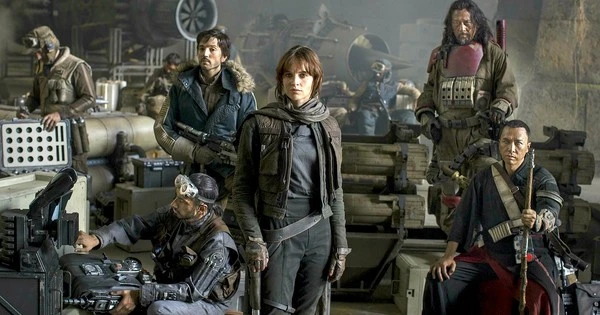
The concept of inclusivity revolves around the need to have more minority groups, which includes sexual and ethnic in modern movies, that in addition to having a greater presence of diverse (looking) people, mandates the need to ‘represent’ the practices, beliefs and values or in a word culture of these minorities.
In the previous point the focus was on the changing narratives that have come to infect modern movies vis a vie this shift towards minority groups in terms of their sexual, ethnic or nationality. With the underlying aim being to alter what came before, in order to advance something not just different but subversive.
In this part I will delve into the concept inclusivity notably on how it differs from the latter. For unlike the business of diversity: which is about having a more diverse cast, which brings with it problems of its own, with inclusivity, what it is often implied is a kind of forced narrative change: something that greater diversity enables. A shift that has devolved the art of film making to a type of onscreen cultural desecration. One that itself, is perversely viewed by some as a sort of moral and cultural victory. Caz for these new activist-story tellers, it is not just about forgetting the past, or even undoing it, but it is about replacing it with something else. Something worse but aslo better?
To develop this point I have picked the Disney Star Wars movie: Rouge One (2016). Considered the best in the spat of films that have been launched since Disney acquired the famed franchise. One that is known to be darker: in terms of setting and story. For our purposes the focus will be on the cast (i.e. their inclusive character) and what it means.
One of things that stands out about Rouge One is how the Resistance (for those who don’t know Star Wars, these are good guys who are fighting the evil Sith Empire) is comprised almost entirely of minorities. Whereas the representatives of the Empire are comprised almost entirely of Europeans. This is not a coincidence.
The ideas of ‘empire’ and that of ‘the resistance’ appears to fit well within post-colonial narratives that seeks to paint human conflicts under the prism of the colonizing oppressor vs the freedom-loving rebel. But there is more to this narrative. Notably, and problematically in context of Star Wars, its simmering racial undertones. Before I proceed any further, the term ‘minority’ is a curious term, and is something that needs to be broken down a bit.
First off the term minority is generally used in a Western or European sense. And specifically in the case of Star Wars and other movies from the English speaking world, in an Anglo-American context. This raises questions when its usage is seen light of the whole of humanity, which we shall explore. Be warned things might get edgy in the following section.
The ‘Minority’ Paradox and Politicization of Modern Story Telling

The term ‘minority’ is operative primarily in European nations, and in the case of America and other non-European (Western) nations, countries that have a majority European population (e.g. South and Latin American countries). Meaning the ethnic non-European populace in these nations exists as minorities in relation to the ‘native’ population.
Though it is important to note that ethnic Europeans in many Western nations (i.e. English speaking countries, and/or countries with a dominant European cultural and predominantly Christian heritage) were Westernized thanks to European immigration and colonialism. The New World is again a notable example.
However, even in the broader global context, the term ‘minority’ only holds true when working within the Western, European cultural spheres, including Oceania, where Australia and New Zealand dominate. For the moment you go outside these regions, the term minority, one that is associated with the apparent dominance of European or ‘White’ ethnic groups demographically and culturally, changes.
Another point on the terminology surrounding race: I personally prefer the term European to White. For unlike with people of Sub-Saharan origin, where the term ‘Black’ is more appropriate-since that is pretty much the only place in the world where people with such a skin complexion come from. The term ‘White’, however, in a global context, becomes somewhat confusing in application.
One reason is that the term ‘White’, particularly in the Western hemisphere, is often confused with having fair skin, and the underlying racial dimension gets overlooked. The correct understanding of the term ‘White’ does not correspond solely with the idea of having a lower melanin count. For by that standard, even people from countries such as Iraq and Afghanistan, and most Middle Eastern nations, who tend to have fair skin, can be considered ‘White’, which is ridiculous.
The term ‘White’ in its correct usage applies solely to people with an ethnic European heritage: these would include the Germanic, Slavic, Celtic and Latin peoples. Followed by smaller Caucasian races such as the Greeks, Bohemians, Albanians, Finns and Ugrians. This position is rather controversial as certain light-skinned ethnic groups (there is no other way to categorize them) despite how they are likely to be perceived by others, actually fall outside the group of peoples who are considered ‘White’. Notable here are people of Semitic heritage.
This confusion over skin color and race came to light in 2022 when the comedian Whoopi Goldberg (whose real name is Caryn Elaine Johnson) made comments regarding the Holocaust. Observing that the crimes perpetrated against Semitic people in Third Reich and in other parts of Europe was not on basis of race but was a manifestation of ‘man’s inhumanity to man’. This conclusion was based on the view that one could not differentiate between Germans and Jews; on the basis that both peoples had light or ‘White’ skin. And that true racism (according to Goldberg) occurs only on the basis of skin color (e.g. Black vs White) (3).
This analysis is flawed on many levels but it is indicative of the some of the problems we have when it comes to discussions concerning minorities, and importantly the perception of the term minority.
When the term ‘minority’ is invoked in an Anglo-American context, it is usually viewed within a ‘White vs everyone else’ framework. Which generates the view that White people are the vast majority. In practice, however, the actual number of White people (i.e. ethnic Europeans) in the world is relatively small. Considering that a lot of people with White or more accurately light skin, are not even White (i.e. European) to begin with. As an example take a look at these beauty pagents from countries such as Thailand, Vietnam and to a lesse extent the Philippines. The women on show generally have very light skin. But no serious person would call them White.
When it comes to Star Wars, which is essentially an Anglo-America production: with the founder, producers, majority of the actors, and the company that owns the franchise being based in the United States, with a good crop of actors and other stakeholders coming from the rest of the (European/White) English speaking world. Notably, the British Isles.
In the case of Rogue One, the actress who plays the main character Jyn, Felicity Jones, and the director Gareth Edwards are from Britain, the antagonist Krennic, played by Ben Mendelsohn, is Australian. Jyn’s mother is played by the Irish actress Valene Kane. With a number of (White) American actors. So when it comes to representation from the English-speaking (Western) world, ethnic Europeans are still the purported majority.
However in the Star Wars universe this reality need not apply. In fact an argument can be made that the Star Wars universe, in someways represents a far future humanity (Despite being set in a galaxy far far away). One where humanity-as it is in most far future sci-fi romps-has spread across the solar system and beyond. In which case, the story, ought to reflect the actual diversity of the human species on planet Earth. In which case, ethnic Europeans (Caucasians) would be the actual minorities in relation to other major ethnic groups that make up humanity. That is if race is (rightly) classified on the basis of ethnic heritage (Europe) and not light or darkness of skin tone.
Now if the reader is wondering, why am I taking so much time talking about a controversial subject such as race in a topic like Star Wars? Which is, or at least it on the face of it, ought to be about space ships, lightsabers, the Force, the Light side and the Dark Side, with a good amount of familial drama thrown in. After all, even the great George Lucas, the brainchild of the Star Wars Universe, stated in an interview with Charlie Rose (if that counts for anything these day) that the space opera is actually a “soap opera”: one that revolves around familial conflicts, lineage and romance. Well the answer to that question would be that Star Wars today, that like many an esteemed, beloved franchise, has been obscenely politicized.
The Racialization of Art
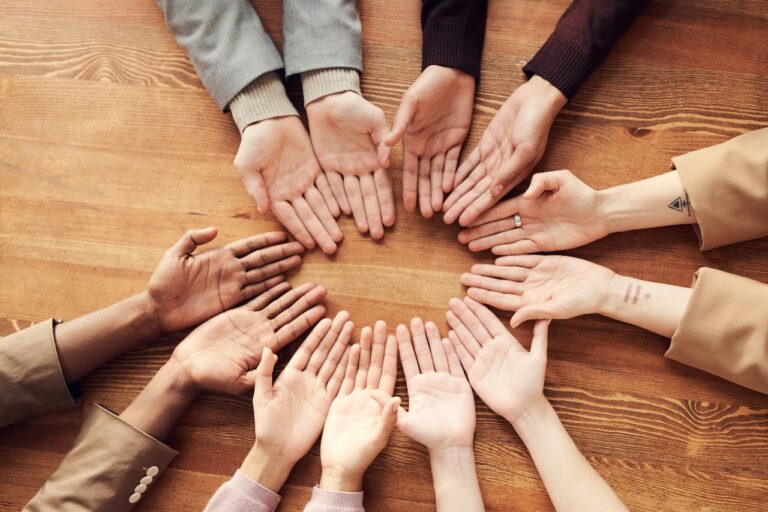
In case if you have not been living under a rock, you would know that Star Wars and virtually every major IP today has been or is in the process of being overwhelmed by ideology. Obviously you wouldn’t feel this, if the ideologies in question are those that you embrace. For those for whom it matters, the main problem lies in the inevitable trade-off that results from the invasion of these worldviews and agendas into what ought to be, primarily a creative enterprise.
So exactly what kind of ideology are we dealing with here, in relation to the subject of inclusivity? Well, some of the comments made by the writers of Rouge One provides some clues. Here are some of the comments made by two lead writers of Rouge One, outlining their take on what the Empire and the Rebel Alliance, the two main factions in the timeline following the fall of the Old Republic, represented.
-
Chris Weitz (screenplay) observed that: “Please note that the Empire is a white supremacist (human) organization.”
-
Gary Whitta (writer) in response stated: “Opposed by a multi-cultural group led by brave women”(4).
Now to whatever extent these observations correspond to reality (of the Star Wars Universe) is a subject for debate. However if one is to roll with this narrative for argument’s sake, it sheds some light on what has happened to the franchise following Disney’s acquisition, and some of the ‘narratives’ (or agendas) that are being advanced via this rich world of fantastical escapism for the masses.
In Rouge One, building on the observation that the Sith Empire is a “white supremacist” organization, if one looks at the main antagonists in this movie, and in fact the franchise as a whole, almost all of them are ethnic Europeans: Starting with main villains Darth Vader who began life as Anakin Skywalker, Darth Sidious who used to be the human senator and later chancellor Sheev Palpatine. Followed by high ranking lieutenants of the Empire such as Wilhuff Tarkin, and with the new entry in Rouge One: Orson Krennic.
Going further, the main commanders and admirals of the Sith fleet, if the original Star Wars movies were anything to go by, were all ethnic Europeans (You know, the guys who were getting Force-choked on the spot for their failures in leadership).
Interestingly even the non-human Sith villains seem European. Darth Maul, the main (active) bad guy of the Phantom Menace (1999) who is a Zabrak: which is humanoid, near-human species. Meaning they can technically mate with homo sapiens. For the record the actor who plays the killer of the Jedi Qui-Gon Jinn, Ray Park is European (Scottish).
Expanding into the books, we have Grand Admiral Thrawn, who like Darth Maul is of another near-human species: the Chiss; and a major antagonist during years following the establishment of the New Republic. And despite being blue skinned and red eyed (literally) the Chiss, upon closer inspection, are morphologically pretty much European in all but name. And if one looks at the Star Wars sequel trilogy of films (yea those!) the main bad guys Snoke (Andy Serkis – Mixed Iranian British), Kylo Ren, Hux, Enric Pryde are all White.
What I am getting at here is that being a member of a certain ethnic group-European, Afro-Caribbean, East Asian, South Indian, Amerindian etc-does not come down to skin color alone. The human species if studied for morphological factors, reveals notable differences among the major ethnic branches. Going further into elements of physiognomy, differences among humans can be discerned even within the broader ethnic groups (i.e. the differences between Slavs and Latins (Europeans), Koreans and Vietnamese (East Asians), Turks and Kurds (Asia Minor) etc). With respect to Europeans, there are notable factors that separates those in this border ethnic group that sets them apart from the rest, besides the color of their skin.
Case in point, the Prime Minster of Canada and his now infamous “blackface” theatrics. Coloring your skin black does not make the person resemble members of that ethnic group who feature that pigmentation naturally. As there are other morphological and, if one is to use the word, ‘phrenological’ differences that sets them apart. Staying with the color of skin, the same point applies the other way around as well… Or not!? As the skin whitening or lightening industry, very much popular in the Indian subcontinent makes this more interesting… Or not.
Returning to the world of Star Wars, the argument that the Sith Empire is some mutated version of a white supremacist organization that has somehow managed to attain world (or space) dominance is not without merit. Considering that one such power from humanity’s not so distant past (Take a guess) that also aspired for world domination. Admittedly many aspects of the Sith Empire do feature fascistic elements: from a highly militarized society; autocratic centers of power; the absolute authority of its executive leadership: one that is codified in Sith code: The Rule of Two. Which combined with its all-white troopers (Stormtroopers- a term which has its origins in paramilitary movements in the Third Reich). And the scene is pretty much set.
Now with respect to the supposedly multicultural, multi-ethnic, female-led character of the Rebels, this view also has some standing. A view that has becomes stronger in post-George Lucas era. Rogue One notably, during their council sessions feature speakers who are predominantly ethnic, with a mix aliens (who typically behave like humans). There is a notable woman in-white (who is also White), short hair who seems like its ostensible head, and few men who are ethnically European, but they say and do very little (As if that is a surprise).
It is also worth mentioning, that in reinforcing the apparently ‘non-White’ character of the Rebel alliance, their meetings take place in some greater version of the Mayan temples of South Central America (i.e the non-Europeanized parts). And if one is to read a bit more into this, even the aesthetic of Rogue One is especially dark, particularly the scenes involving the Rebels. The council meetings in particular carry this dim, gray-green tone that makes everyone seem, well darker. Inducing the White ones! The main character Jyn Erso, who is English (presumably Anglo-Saxon) is oddly dark, like she’s been through a chimney before every scene. So the point made by the two lead writers for Rough One does contain some validity (Though this point can be disputed).
However what is not disputable is the phenomenon of the White guy as the bad guy; and/or being the dumb, stupid, cowardly, incapable guy. The question of course is why? Why is this happening? There are a number of explanations. The two most notable ones are,
-
One: White men are easy targets.
-
Two: The growing distaste towards Western civilization in film and popular culture.
These are major points that cannot be fully broken down here. But I will make this observation. One that is rather sad, but at the time infuriating. One that despite its banality, is hypocritically ignored by its main proponents. Which is that virtually all that is good about modern Western media and entertainment has been the product of the works of White, Western, European Men. Either as the product of individual mastery or of the organizations they founded and led. From J RR Tolkien to George Lucas; from Frank Hebert to George RR Martin; from Bungei to CD Projekt Red (Two franchises whose magnificent game adaptations to the TV screen have been abominable).
I guess George Lucas had a point when said that he had sold his beloved Star Wars “to the white slavers that takes these things, and…”. More than he imagined. (As this was said following The Force Awakens). Given how the entertainment landscape has devolved further in the time since (The spate of MCU movies following End Game being a case in point). Notably with the ever greater presence of strong female characters. An obnoxious and increasingly tiresome trope within modern movies and TV that appears to be part of the checklist for virtually all producers that the PC police apparently mandate. Which sets things up nicely for the next problem point: “Equality”. Or what it actually means in practice: the principle of anti-masculinity.
Before concluding this section. if the reader was curious to know how I would handle Star Wars franchise, in terms of its casting and characters, since we have been talking about the subject of race quite a bit. It would go something like this: In terms of people, all the human characters will be played by ethnic Europeans, preferably Northern Europeans: those with light-brown or blonde hair. With all the non-human characters being aliens. Or robots. As to why I do so… Well that will require an essay of its own. Which I might do.
Anti-Masculinity (Thor Ragnarok 2017)
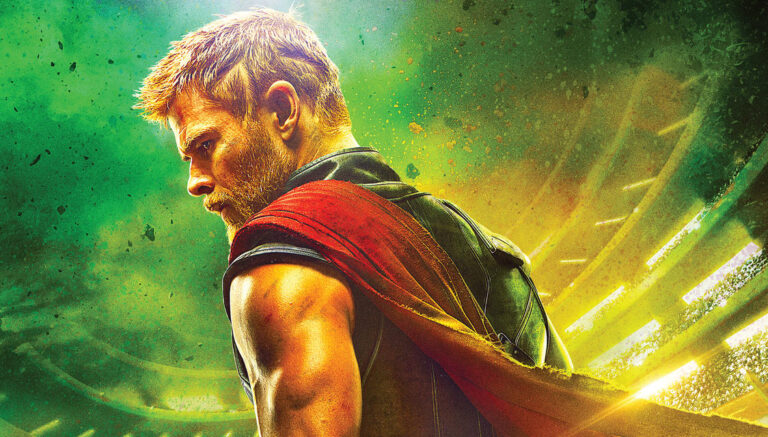
At the time of writing (in September 2022) Thor Love and Thunder was getting some bad reviews for its over-the-top, well everything really. And in these critics the movie often gets compared to its supposedly better predecessor. Thor Ragnarok (2017). But is it really though.
The many problems with Love and Thunder, which is a farce by the look of it, actually began with its better received predecessor. For what we encounter in the latest addition is just a mutated version of the many problems of its predecessor colasced into one. The real problem with Thor Ragnarok comes down to its treatment of male characters. All of them. All for the singular purpose of humor and for elevating the female characters. To advance the message that women are equal… No, BETTER than men.
So how is this goal attained? Well, by following the usual playbook: by adhering to the tried and tested way of making the men in the movie look like a bunch of bumbling, mumbling, idiotic fools, especially in their encounters with women.
Ragnarok: The Story of Strong (Sexless) Women and Dumb (Dickless) Men
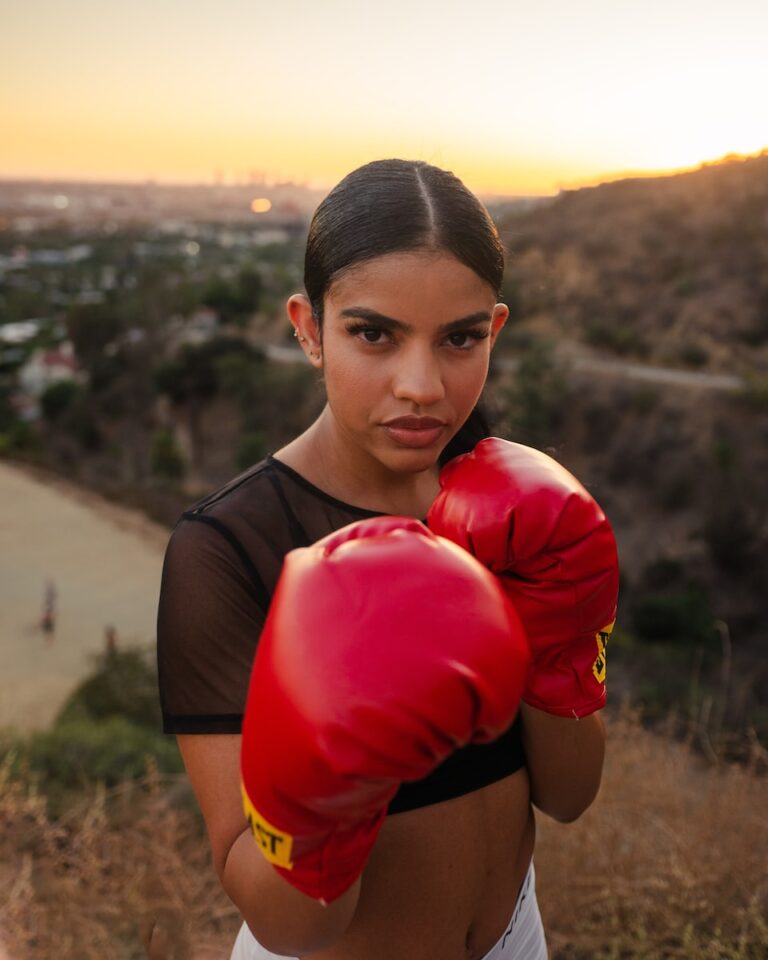

Ragnarok starts off with the revelation that Odin, the father god in Norse mythology, and supposedly the most powerful person in that universe is dying. And his death is made worse by (or is the result of) of the return of his evil, wraith-like daughter Hela. Though according to Norse lore Hela is actually the daughter of Loki, but that is minor detail.
For those familiar with comics, this Hela is a bit different. To saying nothing of the discrepancies with the Norse mythological version. This is a central problem with these movies, as it evinces the extent that the producers of Ragnarok have chosen to deviate from the source. In the comics Hela’s first introduction (according to Marvel database), goes all the way back to 1952. Where the goddess of death takes Sif captive. To which the mighty Thor offers himself in her place. The powerful and wicked Hela is so touched by the act of sacrifice that she returns Sif and allows Thor to go free. Mm… quite the introduction.
Her next major entry was in Thor 1966. This time her presence is one that threatens the children of Odin. As Odin is still alive, and his powers are able to withstand hers, Hela goes after his vulnerable offspring. A key point that is worth mentioning, which will become pertinent later is the romantic relationship between Thor and Sif. The mighty Norse god and the beautiful Asgardian Sif having a divinely fling is carefully avoided in the Marvel movies.
Returning to the main story, Hela is unquestioningly powerful. And the writers of the movie’s script remained faithful in portraying her as nigh invisible, bar the authority of Odin. So killing Odin off at the start was a pragmatic move to unleash Hela. Though where things differ is how Hela’s power manifests.
Hela as the queen of death is the one who eases (or encourages) the passage of those in this world to pass onto the next. And shes does all of this by her touch. Yes by the very sensual, but deadly touch of her hand, she brings death. A far cry from the a** kicking fighter-Hela that is present in the movies. Of course Hela is defeated by Odin, to save his (touched) Son but only at the price of ending death itself. From here the story takes another touching turn (if it hasn’t already).
The consequence of this action (of ending death), removes the refining, purifying effects of the natural cycle of life, results in all plant and animal life growing exponentially. Throwing the world into chaos. With multiplying conflict and villainies. Thor recognizing the catastrophic effects of the choice, and begs his father to undo his actions.
Odin complies and Thor dies. As he lay dying Odin summons Sif, his beloved. Who is heart broken at the impeding loss and appeals to Hela. She appeals to Hela’s womanhood claiming the centrality of love, and states love is all she knows, and that it is all there is. Hela is unmoved, at which point Sif, like Thor before chooses to sacrifice her life in return for his. Now Hela is moved and spares them both.
Another worthy example of Hela is in the comic series In Wolves of the North (2010). A somewhat newer addition in the decades long series, and it came at a time that when the artistic sensibilities of those in the industry, at least at the creative level, reflected a more traditional, or better, authentic gender paradigm: one that was biologically based, and heterosexually oriented.
What I am getting at here is the eye-candy element of the comic book world. One that was a prominent and in many ways a characteristic feature of the world of superhero fantasy/sci-fi. One that (sadly) came to an abrupt end, with the onset of the second decade of the millennium. Just as the Marvel and later DC Universes were getting into their theatrical stride.
Battling the Male-Gaze

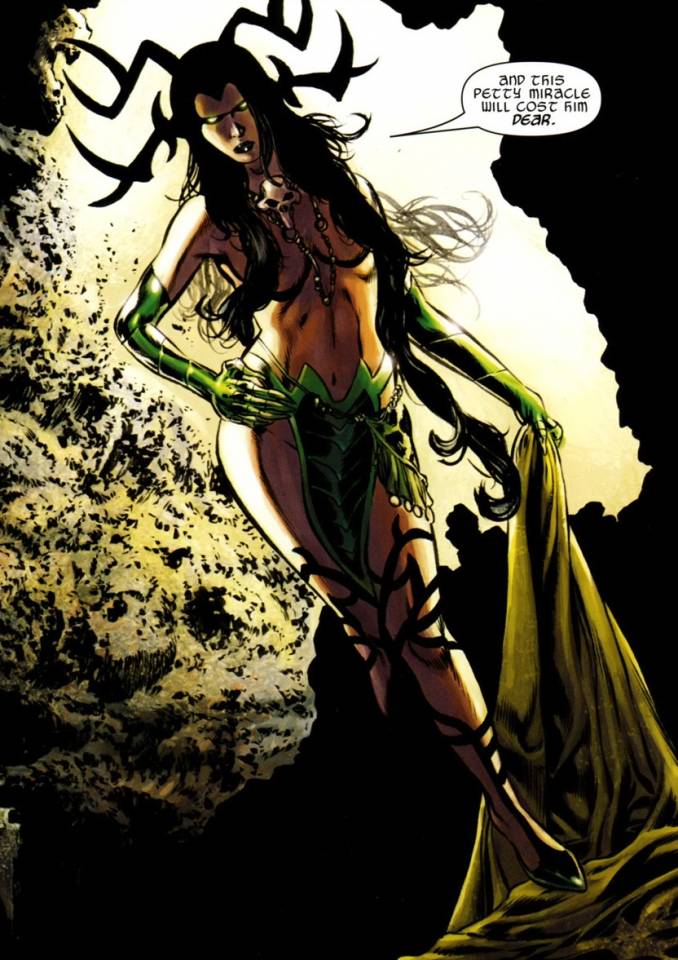
The creeping aura of political correctness that was hitting popular culture around the 2010s just kept on going, and remains a major factor in the push towards more equality vis a vie the logical undermining of traditional masculinity. A central part of its mission was its fight against the apparent sexism that had historically characterized comics and fantasy-based story lines.
The problem of the “male-gaze”, a concept that entered mix from feminist theory, has clearly come to dominate many of the mainstream creative choices regarding the portrayal of women on screen. The main argument of proponents of the “male-gaze” theory of sexism, is that the portrayal of women in a way that is appealing or stimulating to heterosexual (male) audiences, is one that reinforces supposed power asymmetries between the sexes, and paves way for the sexual objectification of women. Which in turn is (supposed to be) an instrument of the patriarchy to keep women down.
There is a lot that goes into it, but the kernel is that the sexualization of women on screen in any way is viewed as a worsening of the supposed disparities between the sexes. One that in turn has fed the counter attempt to portray women as capable (not needing men); independent (of men) and romantically uninterested (in men).
The concept of the strong female character, which is today a predictable feature of virtually all major movie and TV shows, is a feature even in IPs that contain a male protagonist. An accompanying concept into this mix of battling on screen sexism, has been the Mary Sue (insert) character concept: Which is basically a mutated version of these pro-woman (anti-masculine) PC narratives all baked into one.
Returning to Thor Ragnarok, the other main change, or the lack thereof as far as Hela was concerned, in terms of her portrayal was her outfit. Which in line with the times opted for the politically correct sexless portrayal. As you can see, in the above side by side comparison of the outfits of Marvel Comic version (2010) vs Marvel theatrical version.
The growing opposition to femininity and female sexuality under the heading of fighting sexism has gone mainstream with even authoritative news outlets like the BBC advancing their fighting-sexism stories. This one concerns the attempt to right the supposed wrongs of certain “sexist” comic book covers (5). Decide for yourself.
The loss of sex appeal vis a vie their the change in outfits however is not the only loss. The female characters today, in terms of their personality and how they carry themselves simply don’t seem, what is the word available. Female characters in present PC imagination (or hte lackthereof) are purposefully portrayed as not only hard to get, but as allergic to men. In a way that makes the chances for any romantic or sexual tension all but non-existent. And that is supposed to be a good thing for the rest of us to cheer on!
Before expanding further, one needs to look at the bigger picture that underpins this drive towards “Equality”. Which is the broader heading under which these artistic and narrative changes are being enforced. To elaborate, let us look at the character Valkyrie, or rather the very particular portrayal of the character Valkyrie, in Thor Ragnarok.
Artistic Anti-Europeanism
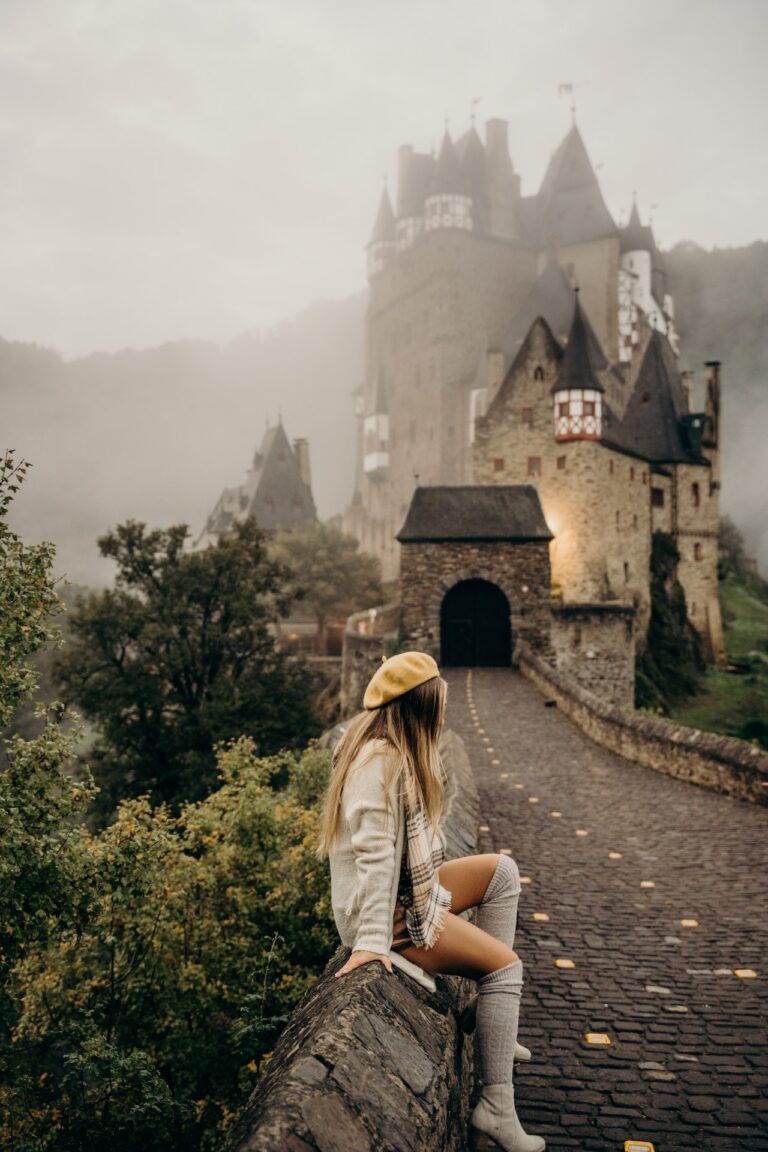
Valkyrie as a character is based on Norse mythology. Though Valkyrie is not a single person but rather a group of maidens who serves Odin. These guardian-like warriors, true to their Germanic origins are blue eyed blondes, dressed in war armor but maintain their outward femininity and beauty. Their role was to bring the chosen warriors who had fallen in battle to Valhalla. In the comics Valkyrie is portrayed by a character named Brunnhilde, who too is a blue eyed blonde (6).
Valkyrie is a mystical role that is meant to be carried out by a chosen soul. One who has traditionally been from the Nordic world. One who happens to be: Young, blonde and beautiful.
In the movie Thor: Ragnarok Valkyrie is played by an African American actress. Who is, well without commenting too much on her physical appearance, does not match the original. Ethnic differences aside, in terms of outfit and persona she is devoid of any sex appeal or femininity. Frankly I wasn’t half surprised the producers didn’t think of giving her an Afro.
Complementing this brigade of sexless girl-bosses is the parade of male characters Thor, Loki, Odin, The Executioner and The Hulk. All of them are either emasculated (quite literally in the case of Thor- whose Hammer gets blown apart in the first 15 minutes of the movie); dead, appear witless, or simply incapable of finishing whatever job they were supposed to do, without the help of the women. And yea, did I mention the comedy. Not only are these movies making of mockery of classic Marvel characters and their heritage, the movies themselves play out as some big f**king joke.
This is bad for a number of reasons. First is the obvious retconning of characters, story lines and their histories that we have come to know. Notable here is the pathetic portrayal Loki, the evil trickster god whose standing in the MCU only got worse with his own 2021 TV show, where he is supplanted by a doppelganger female version of himself. All this buffoonery culminates in Thor Love and Thunder (2022), where with Odin dead, and Thor and Loki god knows where, it is only right that “King” Valkyrie becomes the ruler of the New Asgard.
Consider that: an ethnic non-European (African) female is now the ruler of a European mythic kingdom. Wonder how things will work out if a blue eyed Aryan male became the ruler of Wakanda?!
Shameless racebending, and ideological sexlessness aside what we have now is quite literately the replacement of Europeans from historically European roles. And with it comes the unmistakable shifts in tone, character and aesthetic to supplement the breakdown in storytelling, which was falling apart anyway. I mean seriously guys, who the hell would come with and then greenlit a brain dead script where dinosaurs and humans coexit on planet Earth! I digreess.
Seriously, The way things are going, one should not be surprised if one had African tribal warriors and the like roaming around traditional European cities and country sides in fantasy or medieval settings doing their tribal thing. Oh wait that is already happening: The Witcher Netflix series.
In Conclusion: The Supremacy of Agenda Over Artistry
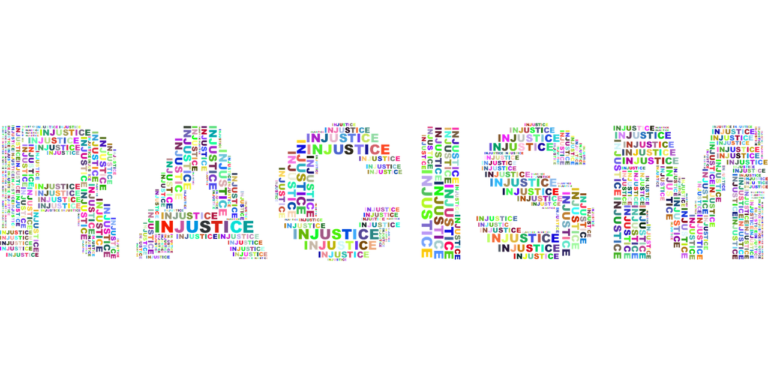
In sum, the main problem with modern movies is they are less concerned about making good movies that do well in on the basis of storytelling, character development, and world-building. Instead the main objective it seems is to take whatever good that is left in terms of extant IPs: the history, the lore, the characters and plot lines and then use it, or better, exploit it to advance their own ugly narratives. Politicized bullsh** mascarding as thoughtful narratives, that rely on the gulibility and timidity of audiences who are happy to part with their money for a cash grabs based on popular but wanning IPs every single year.
The fact that susceptible/guliable audiences are willing to part with their money year after year on movies that not only DON’T give them what they want, but tell them that what they DON’T want is good. Maybe its time for a reconsideration.
The rich world of complex narratives, long winding story arcs, fantastical worlds and captivating alternate histories are mere tools for these artless ideologues, who force through their distasteful messages on gender, race and sexuality. With the causalities of this enterprise invariably those who value good story telling and artistic creativity. But who are they (we) really? Given that so much of popular culture has shifted away from this standard.
To word it differently, we are those who value the true, the good, the beautiful. Which deep down are the very things that these contemporary takes on once great franchies are opposed to. Taika Waititi wasn’t mixing words when it stated that, responding to a Tweet in 2019 on how bad Thor Ragnork was: “I’ll ruin your mythos in a minute, baby”(7).
Essentially the idea of undoing what came before, forwarding politically correct narratives (feminism, homosexuality, post-colonialism), and using the medium of movies and entertainment as indoctrination, and propagandizing mechanisms for a perversely secular strain of nihilism. One that is firmly set against the history, traditions, culture, and hertiage of the West. ‘The West’ that at point in the recent past stood for these very things. Things which gave rise to these beloved, artistically excellent IPs that have stood the test of time.
The very artistic manifestation of the heritage of the West that is now being desecrated before our eyes in self-indulgent sh** shows that pass off as real story telling, with goofy jokes and ridiculously bad character arcs defining these big budget movies that are supposed to resonate with global audiences. They shouldn’t. Not for any self-respecting movie goer who values good storytelling and cinematic creativity built on the aim to push the theatrical enterprise forward. Not to use it as a vechile for promoting ugly ideologies borne of envy, bitterness and resentment.
The reason why modern movies suck is that they don’t value the true, the good and the beautiful. What they do value instead-besides a quick buck-is the befouling of what came before. What is going on in the big screen today is the artistic abolition of man. One that in the process of wrecking (quite literally) the lore and beauty of authentic cinematic storytelling, indirectly is aimed denegrating that which is Western, Christian and European.
References
Oxford Learners Dictionaries (2022) Ideology. [ONLINE] Available at: https://www.oxfordlearnersdictionaries.com/definition/english/ideology?q=ideology. [Accessed 9 October 2022].
YouTube (2017) Why The Matrix may be the BEST MOVIE EVER! | Film Legends. [ONLINE] Available at: https://www.youtube.com/watch?v=7DX9iyHaEac. [Accessed 9 October 2022].
BBC (2022) Whoopi Goldberg’s second ‘sorry’ over Holocaust remarks. [ONLINE] Available at: https://www.bbc.com/news/world-us-canada-60209527. [Accessed 9 October 2022].
Wired. 2016. The Alt-Right Hates Rogue One, Because of Course It Does. [ONLINE] Available at: https://www.wired.com/2016/12/rogue-one-alt-right-boycott/. [Accessed 9 October 2022].
BBC. 2018. 100 Women: The artist redrawing ‘sexist’ comic book covers. [ONLINE] Available at: https://www.bbc.com/news/entertainment-arts-45149478. [Accessed 9 October 2022].
Marvel Fandom (2022), Brunnhilde (Earth-616). [ONLINE] Available at: https://marvel.fandom.com/wiki/Brunnhilde_(Earth-616). [Accessed 9 October 2022].
Marvel’s Thor: Love and Thunder Director Taika Waititi Trolls Thor Fans: “I’ll Ruin Your Mythos in a Minute, Baby”. 2019. Bounding Into Comics. [ONLINE] Available at: https://boundingintocomics.com/2019/08/05/marvels-thor-love-and-thunder-director-taika-waititi-trolls-thor-fans-ill-ruin-your-mythos-in-a-minute-baby/. [Accessed 9 October 2022].

